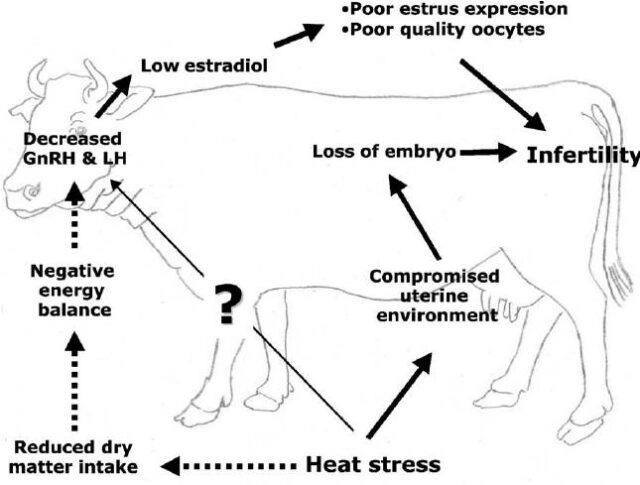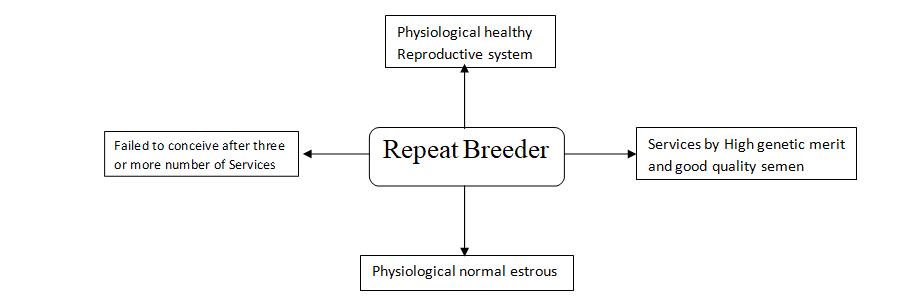
Department of Veterinary Gynaecology and Obstetrics, College of Veterinary and Animal Science, Navania (RAJUVAS, Bikaner)

A cow is called as repeat breeder when it has failed to conceivecowboys jersey 49ers jersey cheap yeezy shoes geox sito ufficiale harmont & blaine outlet shop online best human hair wigs for black females aguilas cibaeñas jersey wmns air 1 mid yeezy shoes for sale cruz azul jersey 2023 guardiani scarpe custom made soccer jersey belletress caliente rose sex toy best sex toys even after three or more number of services, has normal estrus cycle length, no abnormality in the vaginal discharge, no palpable abnormality in the reproductive tract, has calved at least once before and less than ten year of age.

An animal’s ability to reproduce is one of the key essentials in a dairy herd. In sustainable dairy farming one calf crop per year is necessary to increase profit of farmer.
Productive life cycle of cows begins with parturition. Subsequently, cows need consistent cycles of conception and calving to start consequent lactation which is the vital component of its productive life. It is, therefore, vitally important that a herd possesses a robust reproductive pattern. Hence, it can be reasoned that any herd reproduction problems can have a devasting impact on the dairy farm. These issues must be detected and remedied at the earliest to safeguard the herd and the enterprise.
Repeat breeder cows are the bane of any dairy enterprise and one of the major causes of economic loss.
What is a repeat breeder cow?
– A cow that has regular estrous cycle
– The cow does not possess or exhibit any palpable clinical abnormalities
– The dairy animal does not have any uncharacteristic vaginal discharge
– Is usually less than 10 years age
– The cow has calved once and has failed to conceive despite (at least three
or more) consecutive inseminations. These animals will regularly come
to heat but will not conceive despite mating/ AI.
Here are some causes of Repeat Breeding Syndrome (RBS):
1. Genetics:
One reason could genetic abnormalities passed on from a parent. Primarily, defects or flaws that occur during the differentiation process could be responsible for RB Syndrome.
2. Age:
Age has a definitive role to play in fertility. There is a higher incidence of repeat breeding in older cows (> 10 years).
3. Uterine infection and repeated estrous cycles:
A healthy uterine environment facilitates normal life-cycle of conception and calving. It, therefore, stands to reason that any abnormality or disease infecting the uterus will negatively impact the animal’s health and its calving cycle. Disorders such as uterine infections, endometritis, pyometra, metritis etc. cause a high embryo mortality.
4. Congenital anatomical defects of the genital tract:
The reproductive canal of cow offers a congenial atmosphere for oocyte growth, sperm transport, fertilization, and implantation. Anatomical or functional defects of these organs will cause gestational failure and repeat breeding.
5. Improper ovarian function:
Dairy cows often develop ovarian cysts which are a reason for reproduction failure. It is also one on the main causes of repeat breeding in herds.
6. Causes related to nutrition:
Appropriate nourishment and an optimal body weight ensure a healthy reproductive cycle. Malnourished and underweight cows show poor rates of conception.
Cows must weigh between 240-275 kg (for indigenous and jersey cross heifer) and ~350 kg (for HF cross heifer).
Since this study indicated that cows and heifers with good body condition kept in appropriate housing conditions were less impacted by RB, dairy cattle producers should be recommended to enhance the management practices of dairy cattle, give adequate feed and health care, and properly manage housing(b)The severity of RB issues may be reduced by adequate heat detection, timely insemination, and appropriate bull selection for breeding while taking into account the size of the cows(c)To reduce RB and other predisposing reproductive problems, dairy producers should be trained in routine inspection, management, and handling of cows during postpartum periods.
7. Artificial insemination:
Any incorrect action/s across the several stages that artificial insemination involves could result in failure to conceive by the dairy cow. Dairy cow that has come into heat in morning, should be inseminated in the same day evening and if came to heat on evening she should be inseminated on next day morning (A.M P.M Rule).
Possible solutions to reduce repeat breeders:
1. Bolstering the oestrus (heat) detection: Early and accurate oestrus detection is the key to keep cows from becoming repeat breeders. Less than 50% of dairy farms have and accurate oestrus detection system. This is critical if conception rates are to increase since timing is everything. Cows should be observed for at least 30 mins thrice a day for signs of heat.
2. Administration of GnRH at insemination
GnRH are synthetic hormones that imitate the body’s natural hormone gonadotropin-releasing hormone (GnRH). These are injected at estrus detection and prior to insemination. Studies show that this is helpful in reducing the incidence of RBS Hubner et al., 2022.
3. Nutrition
Taking specific care of nutrition during dry, transition and fresh phases to maintain optimum body condition score (BCS).
4. Management and alertness of farmer
The severity of repeat breeding may be reduced by adequate heat detection, timely insemination, and appropriate bull selection for breeding while taking into account the size of the cows Eshete et al., 2023.
References
Hubner, A. M., Canisso, I. F., Peixoto, P. M., Conley, A. J., & Lima, F. S. (2022). Effect of gonadotropin-releasing hormone administered at the time of artificial insemination for cows detected in estrus by conventional estrus detection or an automated activity-monitoring system. Journal of Dairy Science, 105(1), 831-841.
Eshete, T., Demisse, T., Yilma, T., & Tamir, B. (2023). Repeat Breeding and Its’ Associated Risk Factors in Crossbred Dairy Cattle in Northern Central Highlands of Ethiopia. Veterinary Medicine International, 2023.

















